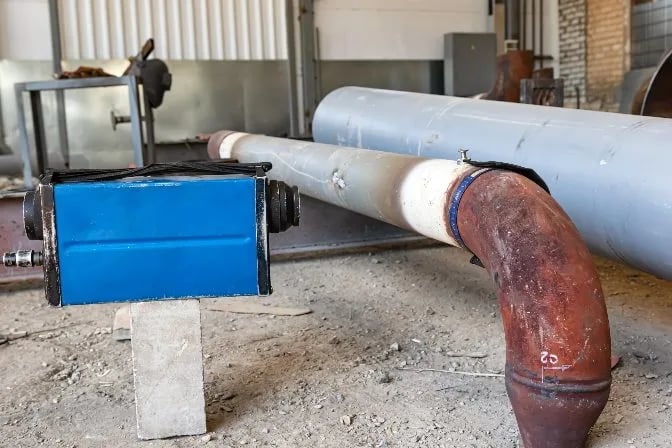Keep Code-Compliant: Specialist Pipeline Welding Inspection Tailored to Your Demands
Keep Code-Compliant: Specialist Pipeline Welding Inspection Tailored to Your Demands
Blog Article
Optimizing Effectiveness: Pipeline Welding Assessment Finest Practices
By implementing finest techniques for pipe welding evaluation, companies can streamline processes, lessen mistakes, and boost task timelines. The meticulous attention to detail needed in welding assessment holds the vital to the long-term resilience and dependability of the pipelines, making it a subject of utmost value in the market.

Significance of Effective Welding Examinations
Efficient welding evaluations play an important duty in making certain the structural integrity and safety of pipelines. Appropriate assessments are necessary to recognize any problems, gaps, or flaws in the bonded joints that might jeopardize the general stability of the pipeline system. By carrying out complete assessments, examiners can find concerns early, stopping prospective leaks, ruptures, or failures that can have significant ecological and security repercussions.
Timely and accurate welding assessments likewise help in maintaining conformity with market requirements and policies. Following these criteria is not just a legal requirement yet likewise a required measure to assure the dependability and durability of the pipelines. In addition, effective evaluations can add to set you back savings by decreasing the requirement for costly repairs or replacements as a result of welding flaws that could have been protected against or remedied during the examination process.
Utilizing Modern Technology for Evaluations
To improve the efficacy and accuracy of pipeline welding inspections, the assimilation of sophisticated technologies has actually ended up being increasingly imperative in making certain accurate and extensive assessments of bonded joints. One of the essential technical improvements in pipeline welding assessments is the use of automated ultrasonic screening (AUT) systems. By embracing these technical solutions, pipe welding inspections can be performed much more properly, leading to higher top quality welds, improved general safety, and minimized task timelines.
Establishing Clear Examination Protocols
Developing clear inspection procedures is crucial for guaranteeing uniformity and integrity in the pipeline welding evaluation procedure. These protocols act as a collection of standards that outline the specific actions, criteria, and techniques to be adhered to throughout evaluations. By clearly specifying the examination protocols, all inspectors included in the procedure can recognize their obligations and functions, causing an extra standard and efficient evaluation process.

Regular testimonial and updates to the inspection methods are additionally crucial to adjust to transforming sector criteria and demands. By constantly refining and enhancing the protocols based on feedback and lessons found out, pipe welding assessments great post to read can maintain the best quality standards and governing conformity.
Training and Accreditations for Examiners

Educating and qualifications for examiners are paramount in making certain the skills and efficiency of people entrusted with supervising pipe welding procedures - Pipeline Welding Inspection. Properly educated examiners have the needed knowledge and abilities to efficiently evaluate weld high quality, adherence to welding procedures, and conformity with industry requirements and regulations
Qualifications, such as those provided by the American Welding Culture (AWS) or the American Petroleum Institute (API), confirm an inspector's expertise and capability to perform assessments to the highest criteria. These qualifications typically call for rigorous training, assessments, and ongoing expert growth to guarantee that examiners remain current with the current advancements in welding innovation and examination techniques.
Along with official certifications, continuous training programs play useful link a vital role in enhancing examiners' capacities. These programs cover a wide variety of topics, consisting of welding procedures, issue detection, safety procedures, and pertinent codes and criteria (Pipeline Welding Inspection). By purchasing comprehensive training and certifications for assessors, firms can maintain the honesty of their pipeline welding projects and alleviate the risks associated with substandard welds
Constant Improvement in Inspection Procedures
Structure upon the foundation of certified and trained examiners, continual renovation in examination processes is vital for making sure the recurring quality and compliance of pipeline welding procedures. By implementing a system of continual renovation, pipe welding assessment procedures can develop to meet the changing needs of the sector, technical improvements, and regulative requirements. This involves regularly evaluating and reviewing examination methods, procedures, and devices to identify locations for enhancement.
One key facet of continuous renovation in assessment processes is responses. Gathering input from assessors, welders, engineers, and various other stakeholders enables a comprehensive analysis of current techniques and the identification of possible areas for renovation. Furthermore, leveraging information and analytics can give important understandings into the performance of evaluation procedures, enabling notified decision-making for optimization.
Furthermore, buying training and growth programs for inspectors can make certain that they are geared up with the current knowledge and abilities to execute their responsibilities successfully. Continuous enhancement is a vibrant procedure that requires commitment and dedication from all stakeholders to drive quality in pipeline welding evaluation techniques.
Conclusion
In conclusion, optimizing effectiveness in pipe welding examinations is vital for guaranteeing the top quality and security of infrastructure tasks. By using technology, developing clear protocols, giving appropriate training and qualifications for examiners, and continuously enhancing inspection procedures, organizations can enhance their operations and lessen risks. It is critical for markets to focus on efficient welding examinations to maintain high criteria and meet regulative needs.
Effective examinations can contribute to cost financial savings by minimizing the demand for costly fixings or replacements due to welding issues that can have been avoided or dealt with during the assessment procedure.
Establishing clear inspection methods is crucial for ensuring uniformity and reliability in the pipe welding assessment process. discover here By plainly specifying the assessment protocols, all examiners included in the procedure can recognize their obligations and duties, leading to an extra efficient and standardized assessment process.
Clear examination methods help in reducing the possibility of errors or oversights during the evaluation process.Building upon the foundation of licensed and skilled examiners, constant enhancement in assessment processes is necessary for making certain the recurring top quality and conformity of pipeline welding operations.
Report this page